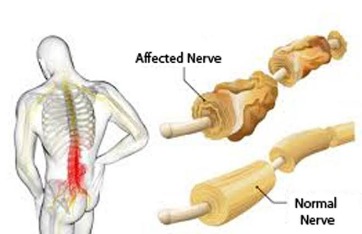
Guillian Barre Syndrome
Guillain-Barre (gee-YAH-buh-RAY) syndrome is a rare disorder in which your body's immune system attacks your nerves. Weakness and tingling in your hands and feet are usually the first symptoms.
These sensations can quickly spread, eventually paralyzing your whole body. In its most severe form Guillain-Barre syndrome is a medical emergency. Most people with the condition must be hospitalized to receive treatment.
Symptoms
Guillain-Barre syndrome often begins with tingling and weakness starting in your feet and legs and spreading to your upper body and arms. Some people notice the first symptoms in the arms or face. As Guillain-Barre syndrome progresses, muscle weakness can turn into paralysis.
Signs and symptoms of Guillain-Barre syndrome may include:
A pins and needles sensation in your fingers, toes, ankles or wrists
Weakness in your legs that spreads to your upper body
Unsteady walking or inability to walk or climb stairs
Difficulty with facial movements, including speaking, chewing or swallowing
Double vision or inability to move the eyes
Severe pain that may feel achy, shooting or cramplike and may be worse at night
Difficulty with bladder control or bowel function
Rapid heart rate
Low or high blood pressure
Difficulty breathing
Types
Guillain-Barre syndrome has several forms. The main types are:
Acute inflammatory demyelinating polyradiculoneuropathy (AIDP), the most common form in North America and Europe. The most common sign of AIDP is muscle weakness that starts in the lower part of your body and spreads upward.
Miller Fisher syndrome (MFS), in which paralysis starts in the eyes. MFS is also associated with unsteady gait. MFS is less common in the U.S. but more common in Asia.
#RaiseAgainstAutism
#PinnacleSaysItAll
#PinnacleBloomsNetwork
#1AutismTherapyCentresNetwork




